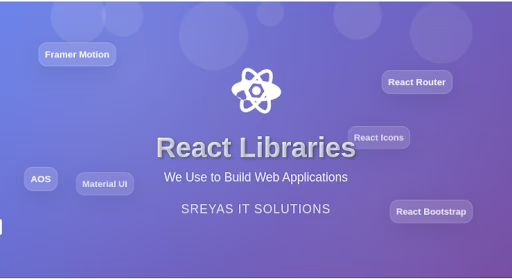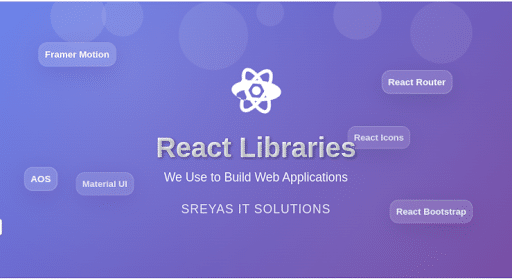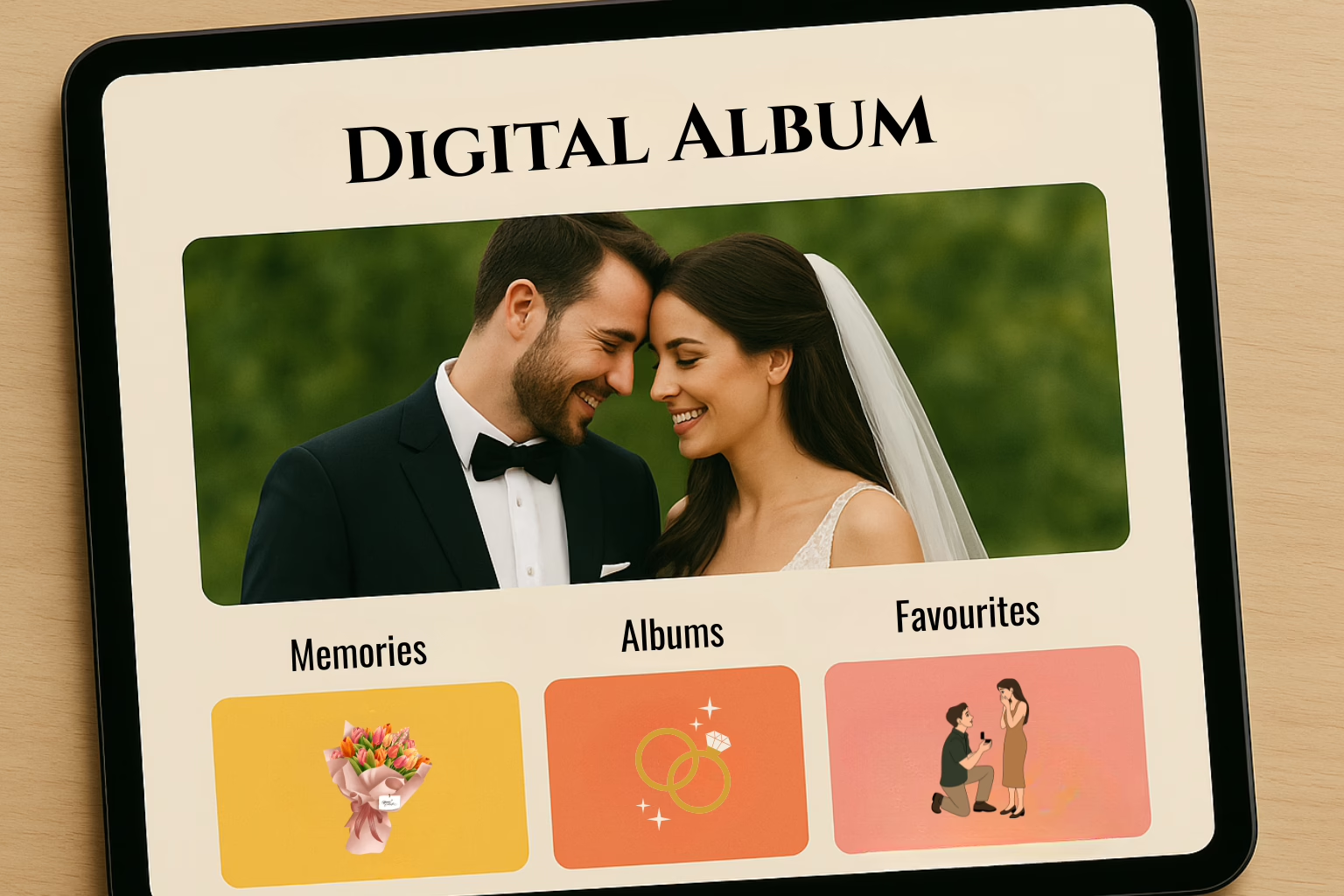When it comes to modern web development, React is one of the most popular and powerful JavaScript libraries available. At Sreyas IT Solutions, we’ve been building web apps using React for years. One of the key reasons we can deliver seamless, high-performance user interfaces is thanks to the robust ecosystem of open-source React libraries.
This is why we’ve compiled a list of some of the most effective and widely adopted React libraries we use internally. These tools not only speed up development but also enhance design, interactivity, animation, and performance in our client projects.
Of course, this isn’t a comprehensive list, as you know, React’s ecosystem is massive. However, these are the libraries we trust and actively use across our production sites and enterprise-grade apps, along with a quick setup guide, so you can see how easily we work with them.
Framer Motion – For Stunning UI Animations
Framer Motion is our go-to animation library for React. Whether we’re building complex transitions between pages or subtle hover effects, Framer Motion allows us to create smooth, high-performance animations with ease. It’s flexible, easy to use, and deeply integrated with React’s component system. This tool helps bring our interfaces to life and adds polish to every project we deliver.
Installation: npm install framer-motion
Usage:
import { motion } from "framer-motion";
<motion.div animate={{ opacity: 1 }} initial={{ opacity: 0 }} />
AOS (Animate On Scroll)
We often use AOS to animate elements as they scroll into view. It’s a lightweight solution that helps guide users’ attention, making pages feel dynamic and engaging. AOS is perfect for landing pages, product sections, and any content that benefits from a smooth entrance. With just a few lines of configuration, our team can add impactful animations that elevate the user experience.
Installation: npm install aos
Usage:
import AOS from 'aos';
import 'aos/dist/aos.css';
useEffect(() => AOS.init(), []);
<div data-aos="fade-up">Content</div>
React Router
We regularly use React Router to build single-page applications with smooth, client-side navigation. It enables us to switch between views or components without reloading the page, creating a fast and seamless experience for users. Whether it’s switching between a homepage, dashboard, or dynamic user profile, React Router helps us manage routes efficiently and cleanly. It’s especially useful for building scalable apps where the routing structure grows with features.
Installation: npm install react-router-dom
Usage:
import{BrowserRouter as Router, Routes, Route } from 'react-router-dom';
<Router>
<Routes>
<Route path="/" element={<Home />} />
<Route path="/about" element={<About />} />
</Routes>
</Router>
React-Bootstrap
For projects that require rapid development with responsive design, we lean on React-Bootstrap. It combines the familiarity of Bootstrap with the power of React components, allowing our team to build consistent and polished UIs quickly. From modals to navbars, React-Bootstrap helps us keep development agile without compromising on design quality.
Installation: npm install react-bootstrap bootstrap
Usage:
import { Button } from 'react-bootstrap';
import 'bootstrap/dist/css/bootstrap.min.css';
<Button variant="primary">Click Me</Button>
Material UI (MUI)
Material UI is another staple in our React projects, especially when clients request sleek, enterprise-style applications. MUI is based on Google’s Material Design system and includes a wide variety of customizable components, from buttons to tables and beyond. It also supports theming and accessibility out of the box, which means we can deliver scalable, consistent designs across devices and platforms.
Installation: npm install @mui/material @emotion/react @emotion/styled
Usage:
import Button from '@mui/material/Button';
<Button variant="contained">Submit</Button>
React Icons
We use React Icons in nearly every project. It allows us to integrate popular icon libraries like Font Awesome, Feather, and Material Icons directly into our React components. This means we can maintain design consistency and add visual cues to buttons, alerts, and forms with minimal overhead. It’s a small detail that makes a big difference in UI polish.
Installation: npm install react-icons
Usage:
import { FaUser } from 'react-icons/fa';
<h3><FaUser /> User Profile</h3>
Conclusion
At Sreyas IT Solutions, we pride ourselves on using the best tools in the React ecosystem to deliver high-quality, scalable, and interactive web applications. These libraries help us move faster, design better, and build smarter—whether it’s a dynamic marketing website, a real-time dashboard, or a custom enterprise solution.








